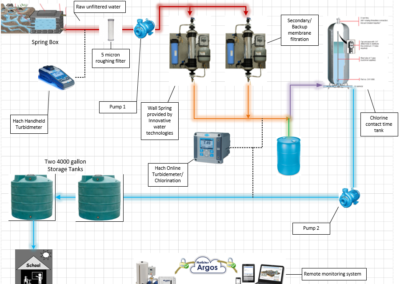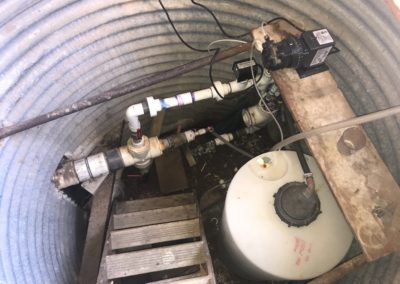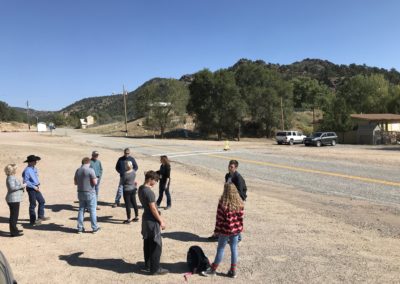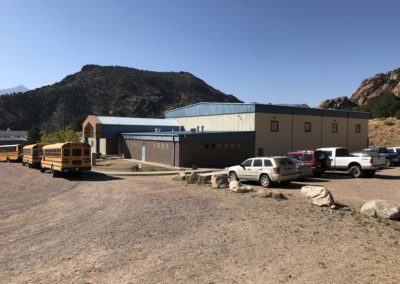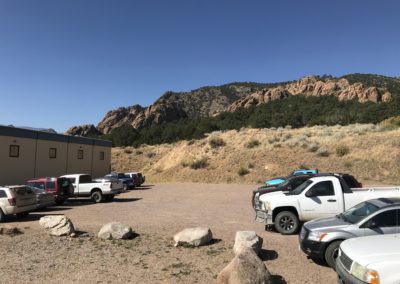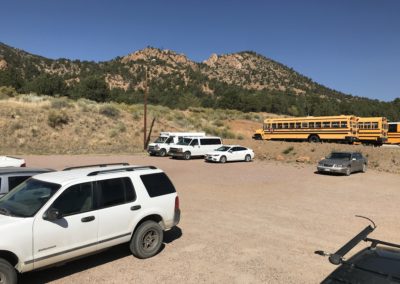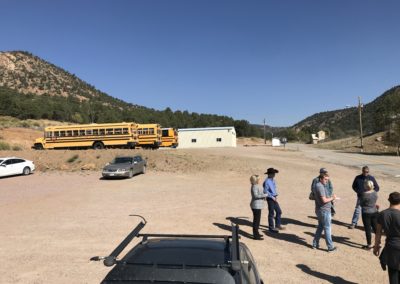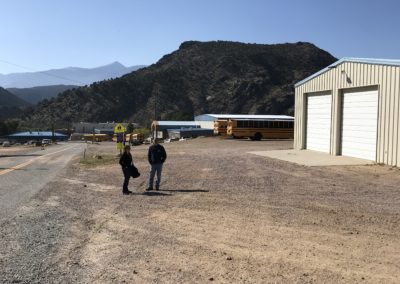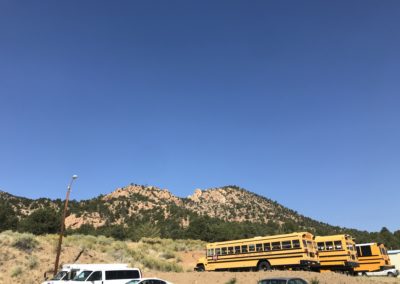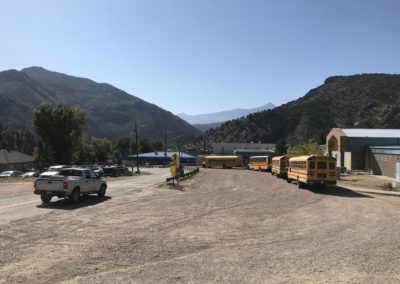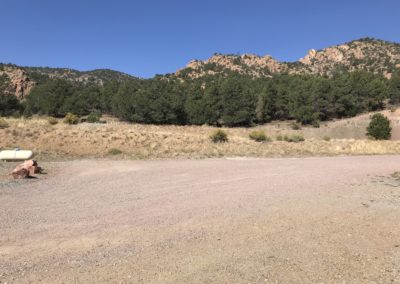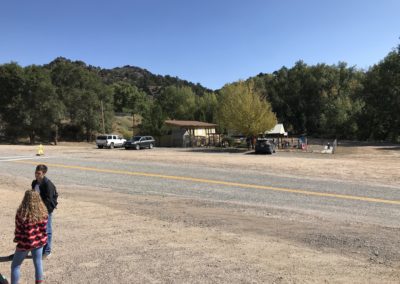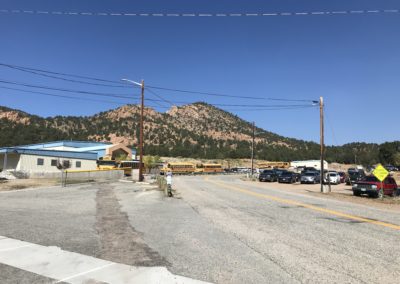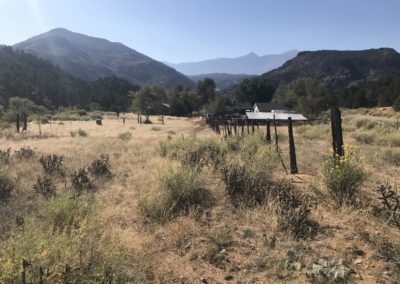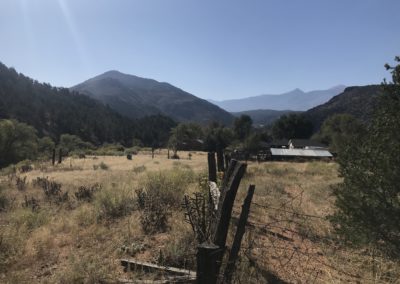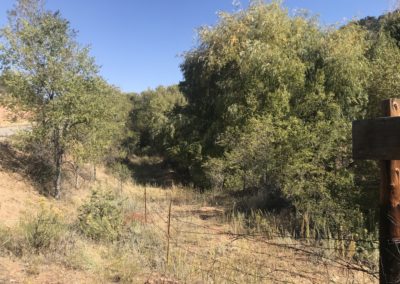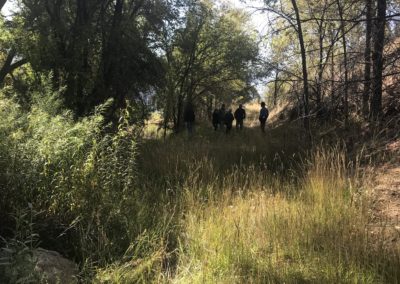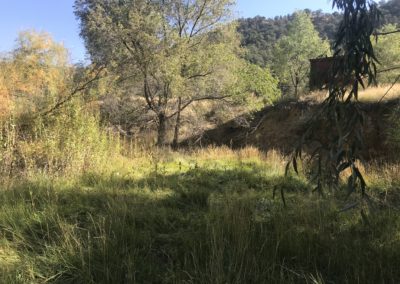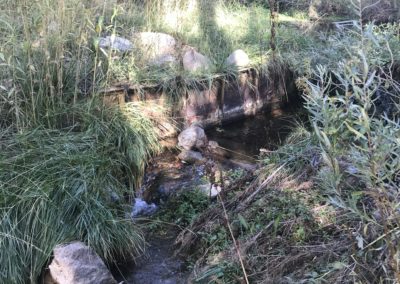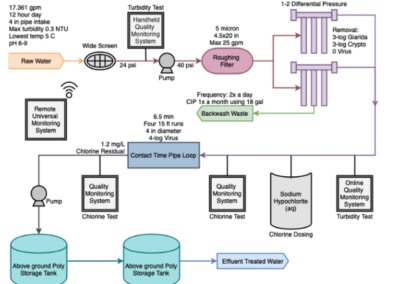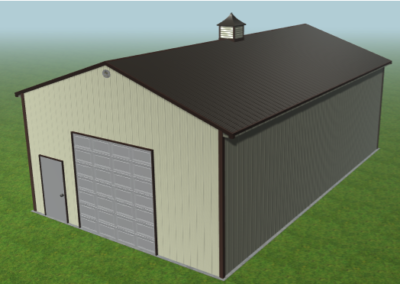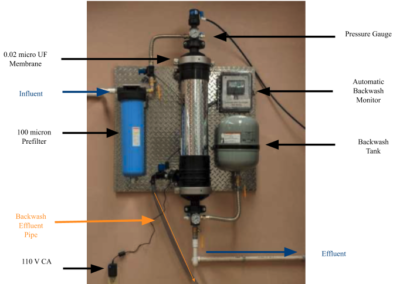Cotopaxi School District RE-3 Drinking Water Project
Overview
The Cotopaxi School District RE-3’s water source has been reclassified as a Ground Water Under the Direct Influence of Surface Water (GWUDI). The district, which serves approximately 300 students and staff from day care through high school, was originally thought to be serviced by a groundwater source. In the presence of surface exposure, water is subjected to large debris, sediment, and bacteria (primarily Giardia and Cryptosporidium). Due to the GWUDI reclassification, Colorado Department of Public Health and Environment (CDPHE) and the school district are working together to update the current treatment system to be in compliance with Colorado regulations. The Cotopaxi Consultants of Colorado (CCC) capstone team from the Colorado School of Mines (CSM) has been tasked with identifying design alternatives for surface water treatment systems that meet compliance and are feasible for the school district.
The final design addresses the recent reclassification with advanced water treatment technologies that meet water quality parameters which adhere to the State of Colorado Design Criteria for Potable Water Systems. Outside of compliance, the design has met daily usage requirements, while simultaneously achieving the most cost-effective technology systems. The final design solution includes a wall mounted filtration and disinfection system and two 4,000-gallon water storage tanks that will be housed in a new building designed by the team. This solution meets the current demand of the school and positions the school to adapt to their expected growth over the next 20 years.
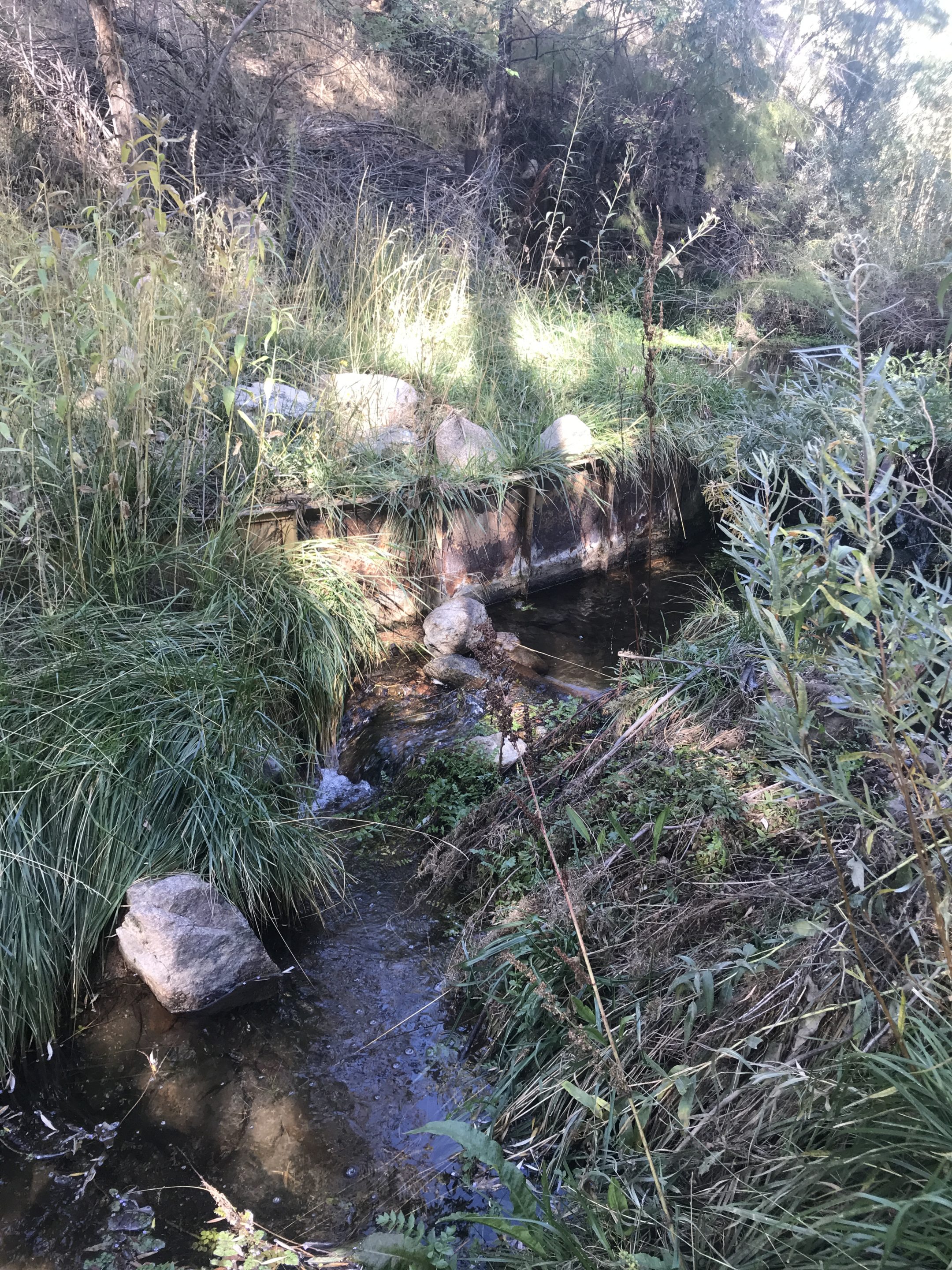
Elevator Pitch
The Cotopaxi Consultants of Colorado are a senior design team enlisted to design and implement a solution for the rural Cotopaxi School District RE-3 whose water source was reclassified to Groundwater Under the Direct Influence of Surface Water (GWUDI).
Cotopaxi received this reclassification from the Colorado Department of Public Health and Environment (CDPHE) in January 2019 when they discovered the school’s primary source of water, Bernard Creek, was no longer a fully underground spring. As a surface water source, Bernard Creek is exposed to higher levels of debris, bacteria, and virus, primarily Giardia and Cryptosporidium. Due to this exposure, incoming water requires additional treatment methods to achieve water quality parameters that meet state compliance.
The team began the project by researching technologies and alternative solutions. In correspondence with Cotopaxi and CDPHE, CCC was able to confirm a system design: ultrafiltration membrane, chlorination system, and storage tanks. The team then worked with a series of vendors and technical experts to determine system operations, costs, and maintenance. The final design includes CCC recommended vendor, with the proposed design and costs, a process flow for the treatment
Design Approach
The team began the academic year by researching design options to determine what would best fit Cotopaxi School District and their water system. Initial design options that were considered included drilling a new well, hauling water directly to the school from a nearby town, and installing a new water treatment facility. After examining the sustainability and feasibility of each option, as well as their ability to meet the school’s needs for the next 20 years, the team, in consultation with Cotopaxi and CDPHE, decided to move forward with the design of a new water treatment facility
Once the design had been decided, further research was required to understand the different filtration options that would be the best fit for Cotopaxi School District based on water quality data, peak demand, budget, system cost, system capacity, ease of operation and other considerations. After a visit to the project site and multiple visits to local water treatment facilities, the team recommended a ultrafiltration membrane system manufactured and installed by Innovative Water Technologies (IWT).
This system would be installed in a new facility on the school property that would include two 4,000-gallon tanks to store the treated water. This two tank, large capacity system will allow the school to offset the demand on their filtration system during peak hours by storing water prior to demand so water can be pulled when needed. This system is designed to meet the needs of the school for the next 20 years based on their current growth projection.

Toured Membrane Filtration System
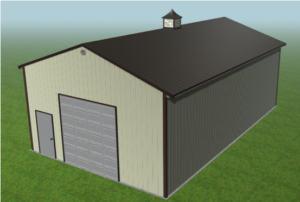
Proposed Treatment Housing System
Design Solution
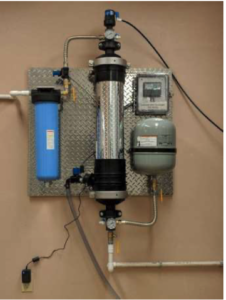
IWT Wall Spring
The team deduced the best option for this project was a membrane filtration system, based on treatment capabilities and feasibility of operation. CCC then researched vendors that could provide a system that met project needs. Multiple vendors were considered, but IWT, recommended by CDPHE, could provide a small enough membrane system that met all treatment requirements while remaining in the proposed budget.
IWT’s proposal included two Wall Spring ultrafiltration membrane components that could run simultaneously and treat up to 19 gallons per minute, meeting the school’s peak requirement of 17 gallons per minute. Additionally, IWT provided several optional services, including chlorine contact tanks, water quality meters, and operator training.
After evaluating our decision matrix with IWT’s proposal, they became the top vendor choice. CCC then designed a filter housing facility that would safetly hold the Wall Springs, tanks, and additional treatment systems, while providing room for operation and expansion. We proceeded with the system and facility in our final design and flow diagram.
For client reference, we also included proposals from other vendors and all preliminary research if Cotopaxi chooses to not proceed with IWT or the school expands, requiring a larger system.
Next Steps
 Cotopaxi will assess the design submitted by CCC and the proposal by IWT. If IWT is the selected vendor, Cotopaxi will coordinate efforts to finalize the proposal and design implementation approach.
Cotopaxi will assess the design submitted by CCC and the proposal by IWT. If IWT is the selected vendor, Cotopaxi will coordinate efforts to finalize the proposal and design implementation approach.
In order for Cotopaxi School District to implement the water system, the design must be approved by CDPHE through the Drinking Water Design Submittal form. The form will be initiated by CCC, but will need to be finalized by Cotopaxi. To finance the new water system, Cotopaxi will request state funds in the form of grants. Upon approval of the design from CDPHE and the acquisition of funds the design will be able to move forward into the building phase.
The housing structure for the water system will need to obtain a building permit from the Division of Fire Protection & Control before the installation of the filtration and disinfection system. Upon completion of the housing structure implementation of the water system can begin with the guidance and support of the vendor, IWT.
Routine maintenance and monitoring will then be carried out by the facilities manager with routine checks by a certified operator.
Meet the Team
Kyle Beller
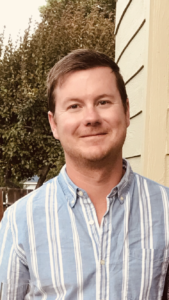 Kyle Beller is a senior at Colorado School of Mines studying Civil Engineering. Kyle grew up in Montana and has lived in Utah, Alaska, Oregon, and North Dakota. Upon graduation, Kyle will take a Civil Engineering position in central Washington State.
Kyle Beller is a senior at Colorado School of Mines studying Civil Engineering. Kyle grew up in Montana and has lived in Utah, Alaska, Oregon, and North Dakota. Upon graduation, Kyle will take a Civil Engineering position in central Washington State.
He has held two internships in the Denver area in both the transportation and mining sectors. Originally from Montana, Kyle has worked in the Oil & Gas industry, heavy equipment, and National Park Service prior to attending CSM.
In his free time, Kyle enjoys traveling, cooking, skiing, camping, hiking, boating, and spending time with family.
James Cassata
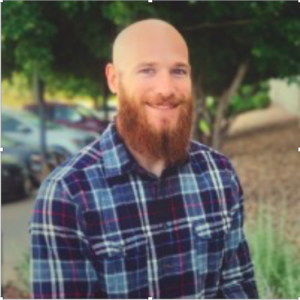 James Cassata is a senior at the Colorado School of Mines, studying Mechanical Engineering and will be Graduating in May 2020. He has an interest in aerospace and humanitarian engineering. He is a US Air Force Veteran and is a member of the CSM Military Veterans Club. After graduation, James will be working for Sierra Nevada Corp.
James Cassata is a senior at the Colorado School of Mines, studying Mechanical Engineering and will be Graduating in May 2020. He has an interest in aerospace and humanitarian engineering. He is a US Air Force Veteran and is a member of the CSM Military Veterans Club. After graduation, James will be working for Sierra Nevada Corp.
James chose this project because he was interested in working on a humanitarian project for his senior design project. He was interested in using his mechanical engineering background for this project to help bring clean drinking water to the Cotopaxi school.
Page Cirillo

Delaney Duis
 Delaney Duis is a senior at Colorado School of Mines studying Environmental Engineering. She is a member of the Varsity Volleyball team, finishing her last season of eligibity in December. Delaney is also an active member of the Student-Athlete Advisory Committe (SAAC), where she is the Community Outreach Chair, working directly with Special Olympics Colorado and Golden Chamber of Commerce to create volunteer opportunities for student athletes.
Delaney Duis is a senior at Colorado School of Mines studying Environmental Engineering. She is a member of the Varsity Volleyball team, finishing her last season of eligibity in December. Delaney is also an active member of the Student-Athlete Advisory Committe (SAAC), where she is the Community Outreach Chair, working directly with Special Olympics Colorado and Golden Chamber of Commerce to create volunteer opportunities for student athletes.
Delaney chose this project because she wants to pursue a career in water and wastewater treatment. She also hold a passion for humanitarian engineer and saw the opportunity through this project to expand her water treatment knowledge, while helping provide safe drinking water for a school.
After college, Delaney plans stay in Colorado and work for Nalco Water as a Technical Sales Engineer.
Daylin Gray
 Daylin Gray is graduating in May with a bachelor’s degree in Civil Engineering. Daylin is originally from Oklahoma and came to Colorado to attend Mines and plans to stay here long-term.
Daylin Gray is graduating in May with a bachelor’s degree in Civil Engineering. Daylin is originally from Oklahoma and came to Colorado to attend Mines and plans to stay here long-term.
Daylin was interested in this project because his mother worked in education and he was excited to get involved with a local school district. He also didn’t have much water resource engineering experience and jumped at the opportunity to learn more about this subset of civil engineering.
After graduation, Daylin will be working for Ulteig Engineers in their Civil/Transportation team in Denver. He currently lives in Denver with his partner Grayson, and their 13-year-old cat Finn.
Devon Gibson
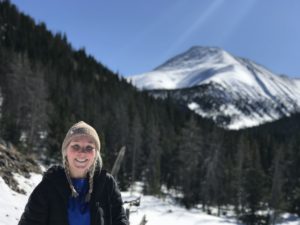 Devon Gibson is graduating from CSM this May with a bachelor’s degree in Environmental Engineering. Devon grew up as an army brat, graduating from high school in Italy, and came to CSM in the footsteps of her older sister. She plans to stay in Denver for the foreseeable future.
Devon Gibson is graduating from CSM this May with a bachelor’s degree in Environmental Engineering. Devon grew up as an army brat, graduating from high school in Italy, and came to CSM in the footsteps of her older sister. She plans to stay in Denver for the foreseeable future.
